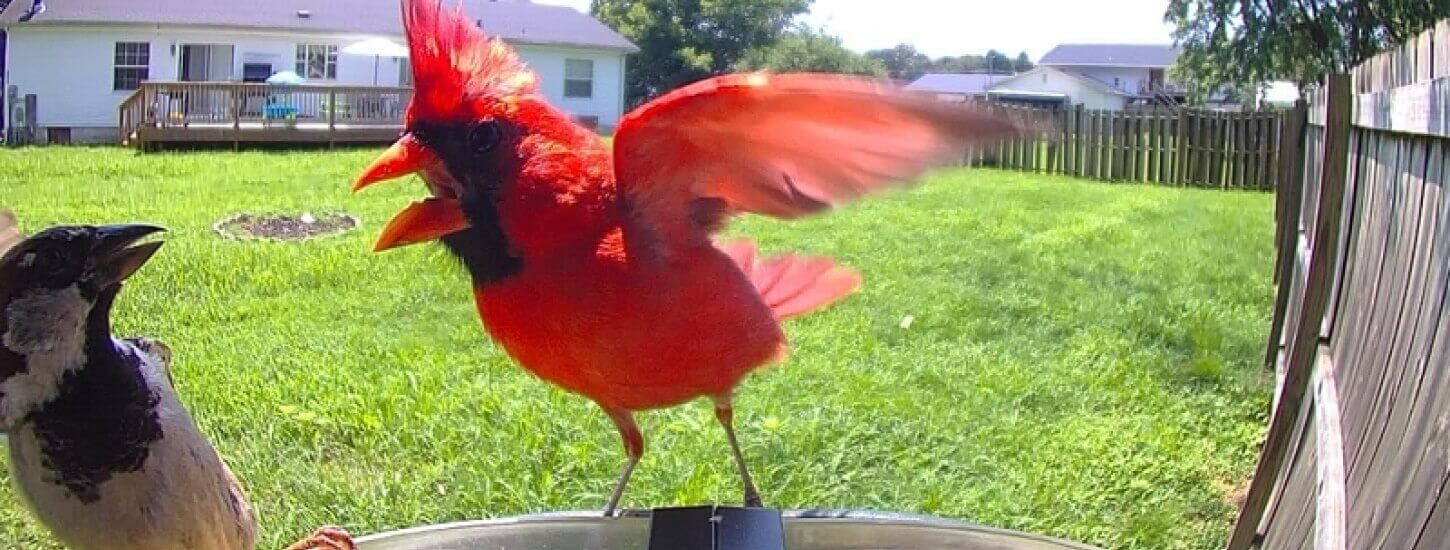

Birdwatching is fun, calming, and a great way to connect with nature and learn more about the natural world around you. But what if you live in a city?
Great news–cities are dynamic landscapes that can harbor a surprising variety of wildlife. From painted buntings in New York City to California scrub-jays in Los Angeles, heavily urbanized areas can be great places to flex your birding muscle. And if you are new to birding, using a smart bird feeder can help you capture amazing images of wildlife in your literal backyard (or stoop, patio, or balcony).
Urban birding, while accessible, presents its own unique challenges. While cities may not be traditional places for birds to live, many species have adapted to the urban environment. Birds are resilient, and they’ve learned to thrive in concrete jungles. Wireless cellular bird feeder cams can play a role in enhancing the birding experience by letting you capture great close-up images of these urban birds.
What Is Urban Birding?
Urban birding refers to the practice of birdwatching in cities and towns. While it may seem oxymoronic, there are birding clubs and activities in cities around the world, and it’s not uncommon to see birders in parks and on nature trails–and even in cemeteries and golf courses.
Urban birding involves spotting, identifying, and enjoying birds that live in or travel through urban areas. Many bird species have adapted to urban living and find food, shelter, and nesting sites in unexpected places like building alcoves, playgrounds, and pocket parks. You can find everything from sparrows and pigeons to woodpeckers, hawks, and even migratory birds in bustling cities.
Urban birding is about more than just identifying bird species—it also offers a way to connect with nature no matter where you are. Urban birding is a simple, rewarding, and relaxing way to experience the world around us.
Challenges of Urban Birding
It’s true–urban areas are home to a wide variety of birds. But there are some challenges that make city birding more difficult.
Many birds may be harder to spot because of the lack of green space and the noise pollution that can mask their calls. Cities generally have less tree cover and fewer natural areas like forests, wetlands, and meadows–all places that are more likely to attract a diverse array of bird species. Plus, all the buildings, structures, and busy streets can be difficult to find safe and quiet spots where birds feel comfortable to land.
That said, cities are home to an increasing number of parks and community gardens where birds can thrive, and many cities are making an active push to encourage more tree planting and native landscaping. Urban areas can also offer an abundance of food sources, such as parks with fruit trees or even bird feeders in residential areas. Because of these factors, birding can be as simple as a walk down a leafy street. By providing appropriate food and habitat, urban birders can attract a variety of bird species right in their backyards.
Smart Bird Feeders for Urban Birding
Urban birding today is easier, more interactive, and more rewarding than ever before. One such reason is smart bird feeders, which are designed to enhance the birding experience. Unlike traditional bird feeders, which simply provide food for birds, a smart bird feeder offers advanced features that can help birdwatchers engage more deeply with the birds in their area.
Smart bird feeders combine a motion-activated camera with a feeding tray. When a bird lands on the feeder, the camera captures an image and sends it to your app. Apps like the FeatherSnap even help you identify and catalog the birds that land at your feeder, and make it easy to share your images with friends and family.
Benefits of Smart Bird Feeders for Urban Birding
1. Bird Identification Assistance
One of the best features of smart bird feeders is their ability to identify bird species automatically. The installed high-resolution cameras capture images of visiting birds and use artificial intelligence to match the bird’s features with a vast database of species. This can take the guesswork out of identification and make it easier to learn about the birds in your porch, patio, or park.
2. Birdwatching at Your Convenience
Instead of having to pack up the car and head to a park or nature center, smart bird feeders bring the action to you. With the help of live-streaming, birdwatchers can view real-time footage of birds visiting their feeders, no matter where they are. See birds at your feeder? Just open the app and watch and hear them.
3. Educational Insights
Smart bird feeders help you learn about the birds around you. The FeatherSnap app, for example, lets you zero in on birds based on slight variations, and collect the birds you spot.
4. Attracting More Birds
Birds love and need food, and bird feeders with the right food in the right location can be an instant hit in the bird community. The FeatherSnap, for example, has two feeding trays, allowing you to use two different foods to attract different species. As a result, smart bird feeders can increase the chances of attracting a wide range of birds.
Urban birding is fun, rewarding, and easier than you think. Even if you live in a metropolis, new tech like smart bird feeders can allow you to connect with nature and learn about the species around you.
